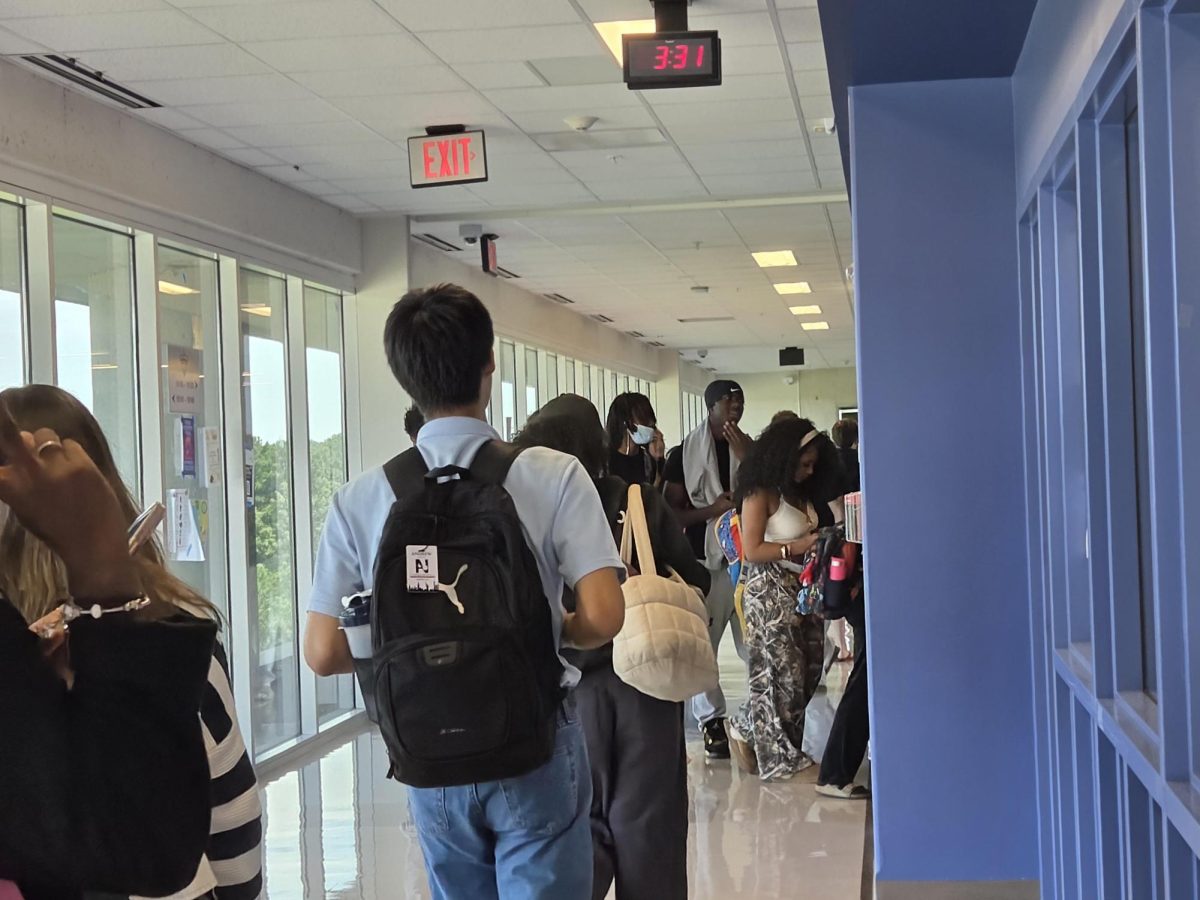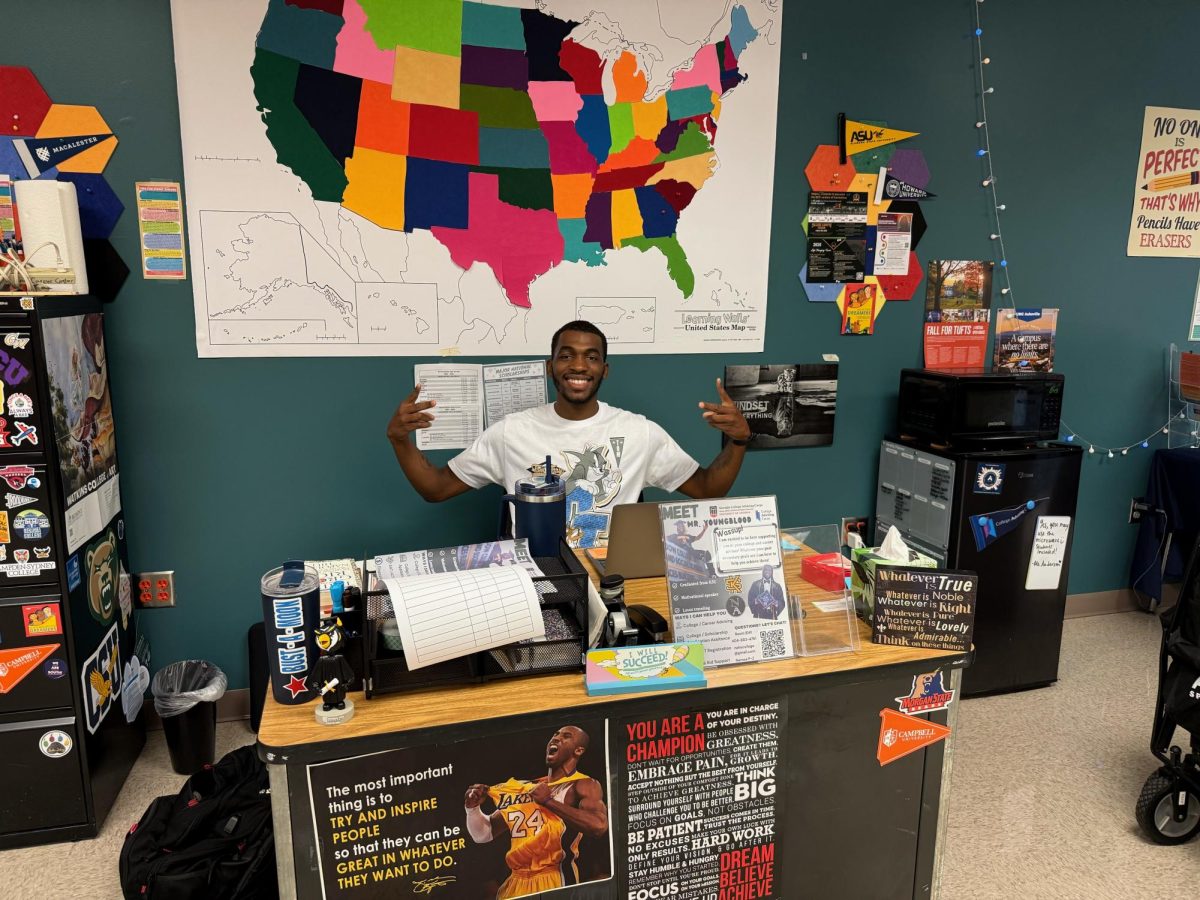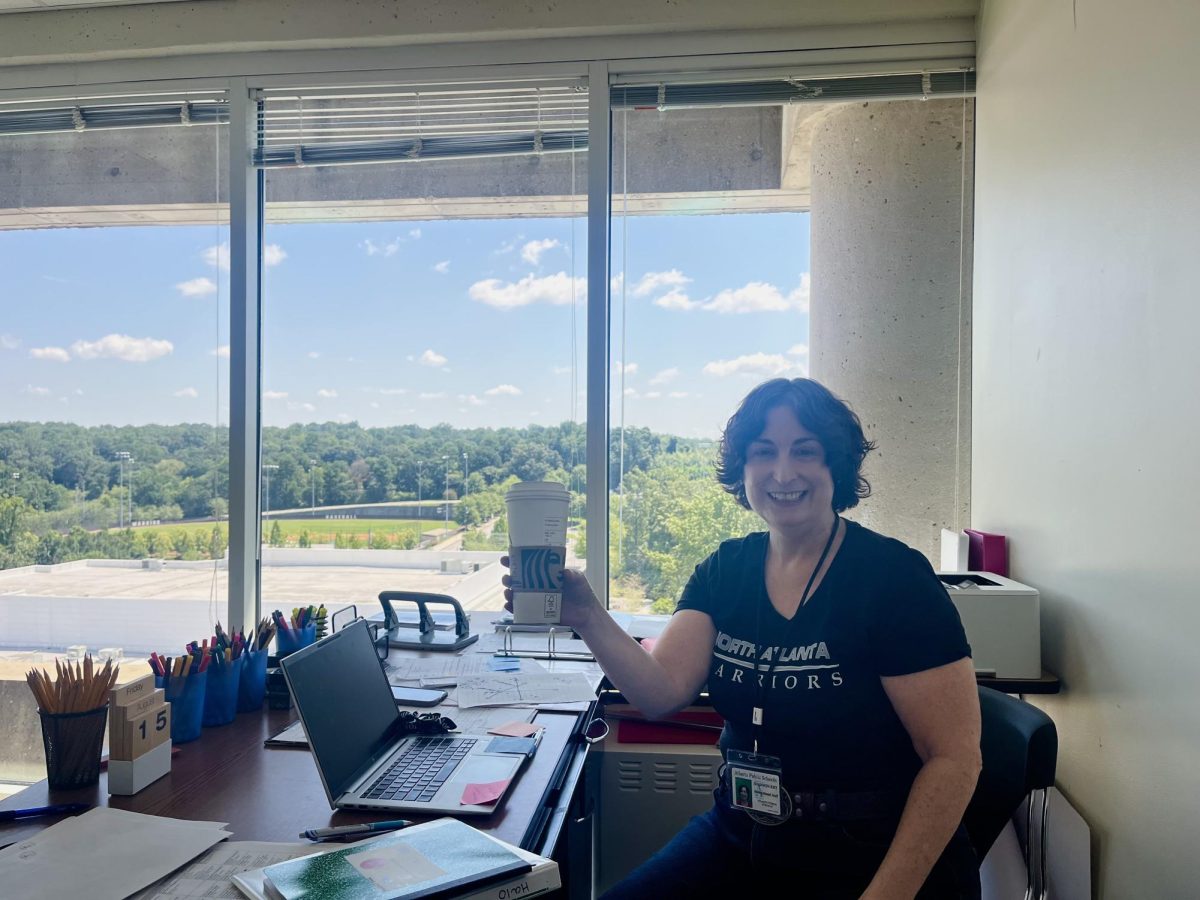The eleven-story North Atlanta High School building is known for its size, but is it getting too small for its students? This year, the school’s population has expanded to 2,377 students. Astonishingly, the freshman and junior classes have increased by 57 and 76 students, respectively. As more students have flooded the halls, classrooms have become increasingly cramped. Many classrooms are now packed with desks from wall to wall. What are teachers doing to manage larger classes?
With more students come more desks. Many teachers have had to reconfigure their classrooms to accommodate more seats, often lining desks awkwardly in corners or along far walls. Although reduced space hinders mobility and changes the flow of the classroom, some teachers have not seen as many drastic effects as they expected. Adam Nelson, who teaches AP Human Geography and IB History of the Americas, has even had to add a rolling desk for his classes of 35. However, he hasn’t had to change any of his classroom procedures; he just has less walking room. “Some things just take longer to accomplish with more students,” Mr. Nelson said.
The problems do not end there. Teachers have discovered that larger classes diminish one of the best parts of teaching: forming relationships with students. With more people to manage and assess, the individual interactions between teacher and student are shorter and potentially less meaningful. Additionally, class participation is a concern, as quiet students can more easily fade into the crowd. While some teachers use methods like popsicle sticks to randomize participation, others still face challenges. English teacher Carla Mills does not see many positives to having larger classes. “It makes it harder to monitor on-task behavior and encourage balanced discussions,” Ms. Mills said.
While difficult to manage, larger classes also have their positives. With more students, teachers can have a greater impact and experience the full reach of their teaching. They get to form new connections, even if the interactions are short. Tiffany Grant, a math teacher who had to drag an extra desk into her room between classes to seat all her students, acknowledged that more students can also mean more creativity. “It allows for more diversity of culture and intellectual diversity in the classroom,” Ms. Grant said.
With the student population continuing to grow each year, everyone is discovering the consequences of larger classes. While the outcome is uncertain, one thing is clear: North Atlanta High School is rising to meet the challenge, and its students are reaping the benefits of a bigger, more diverse community.








